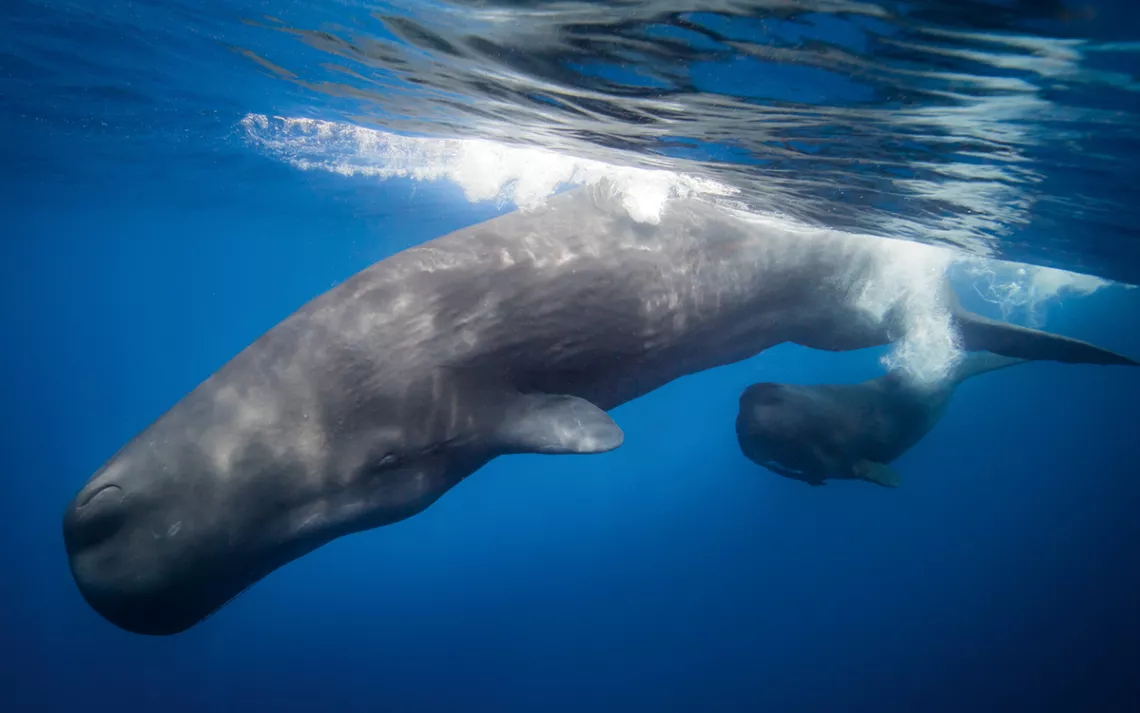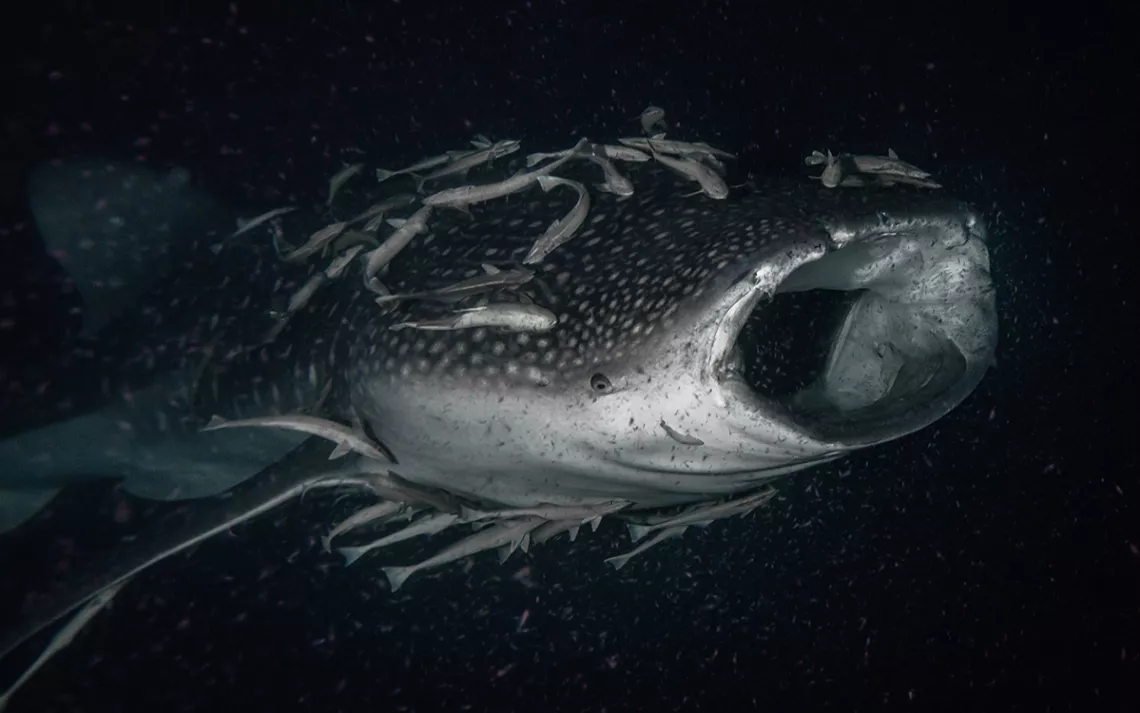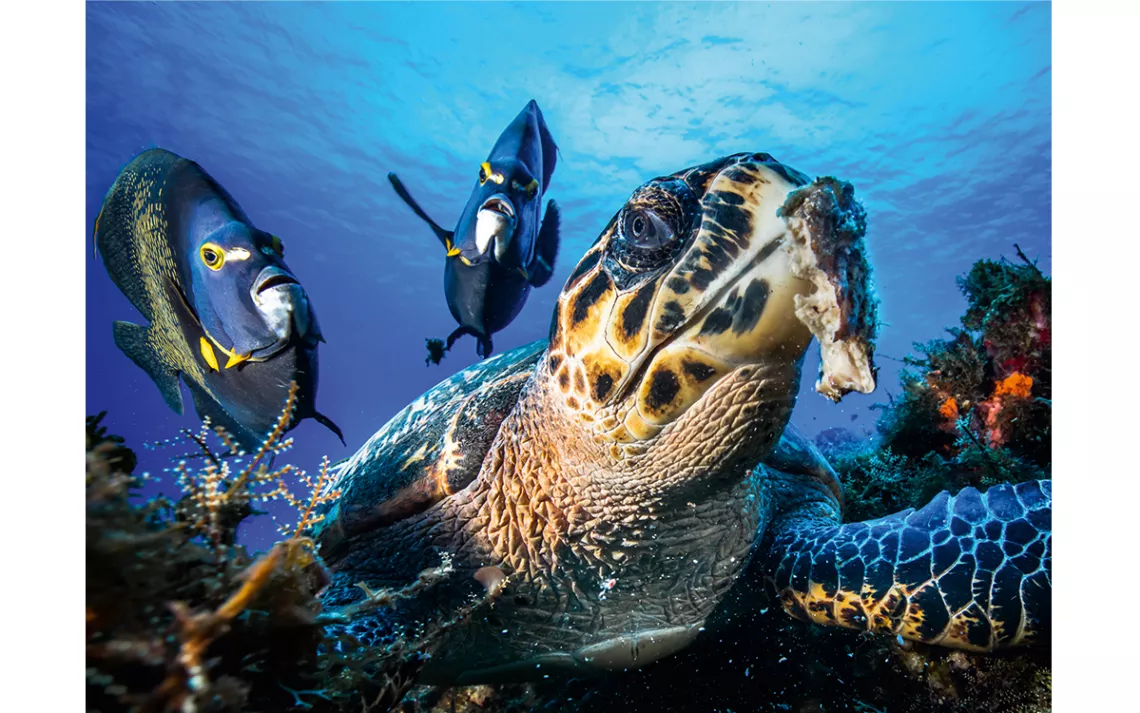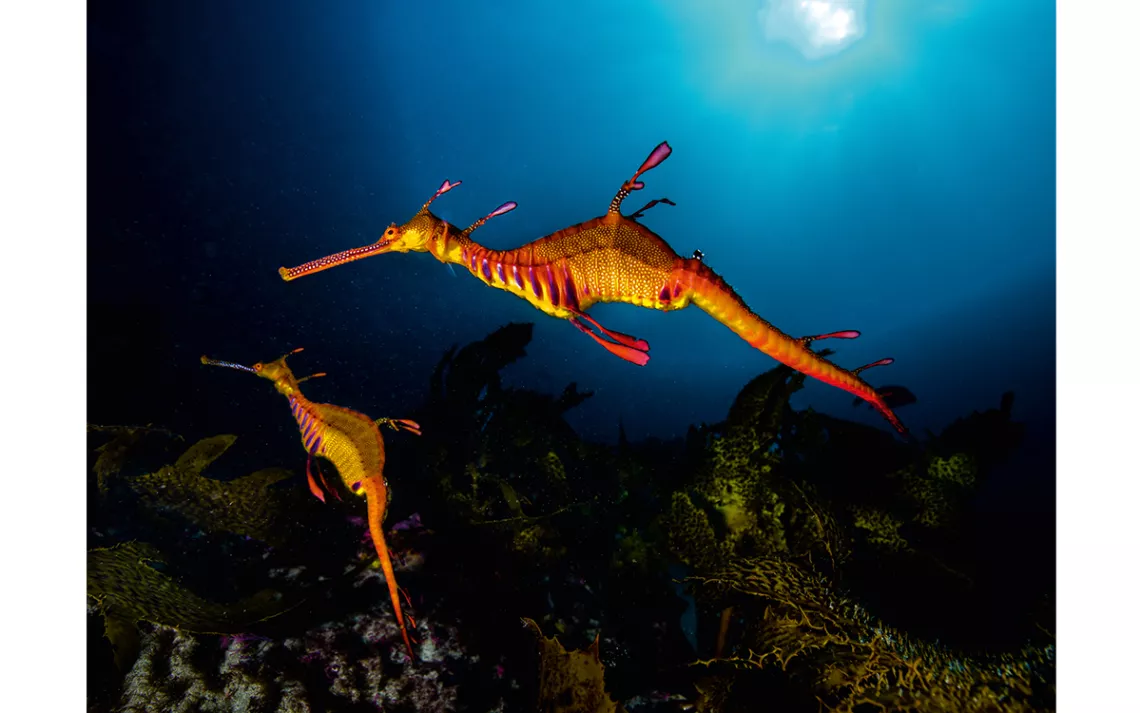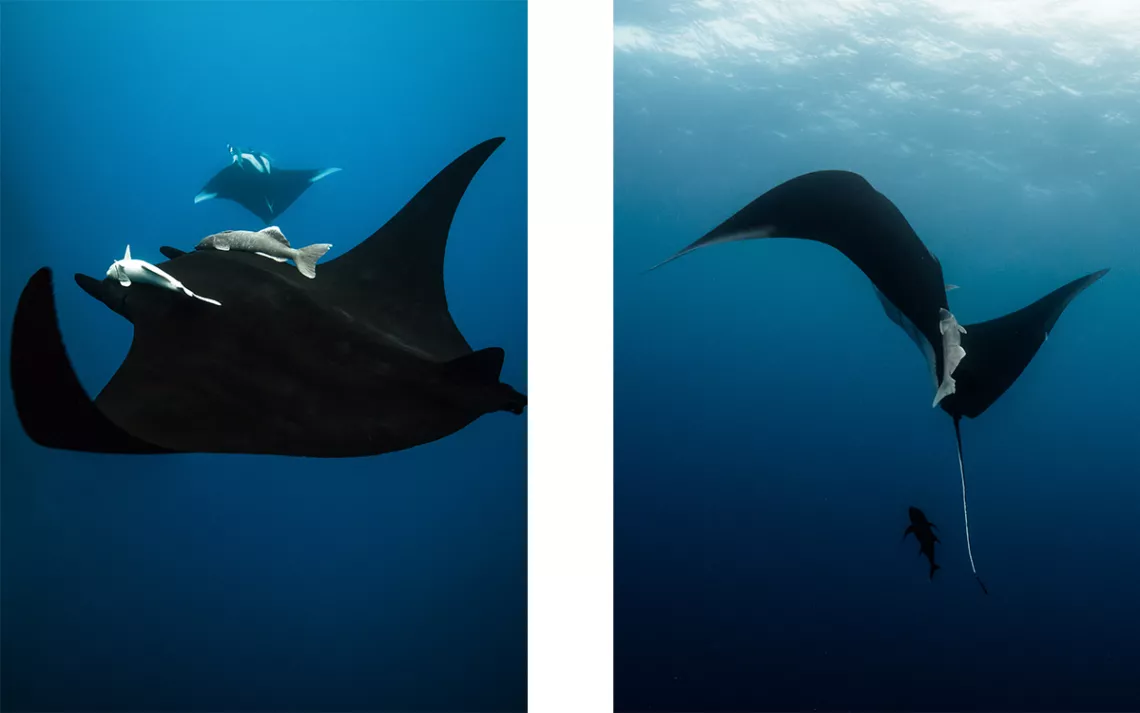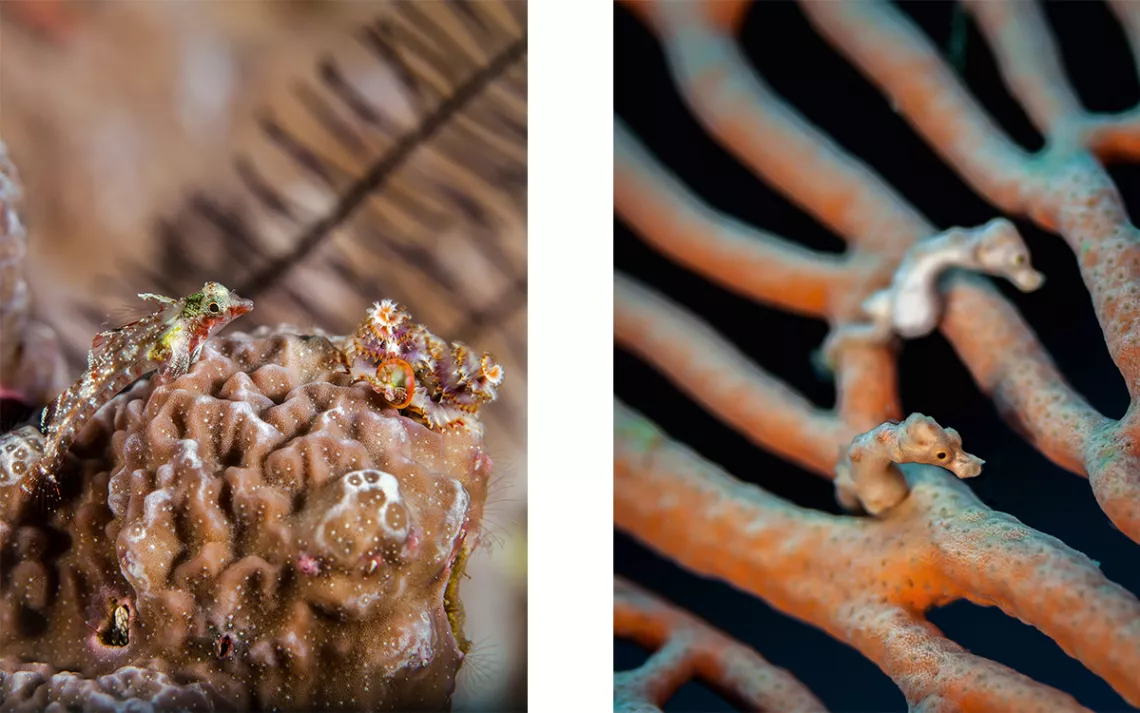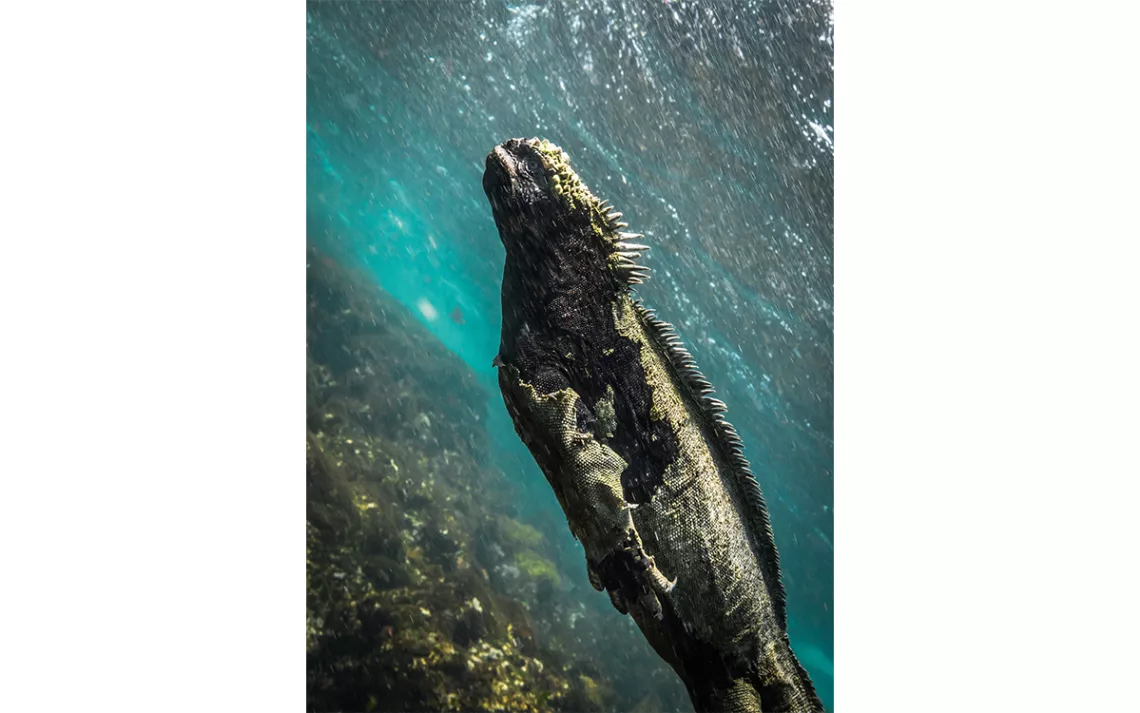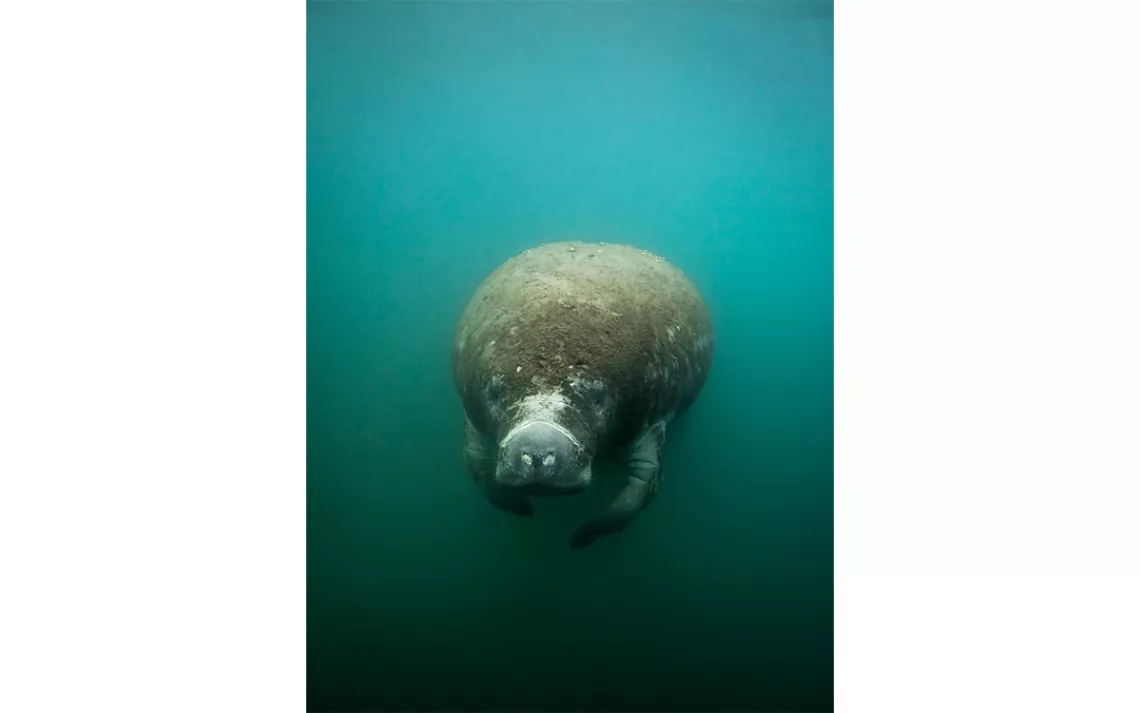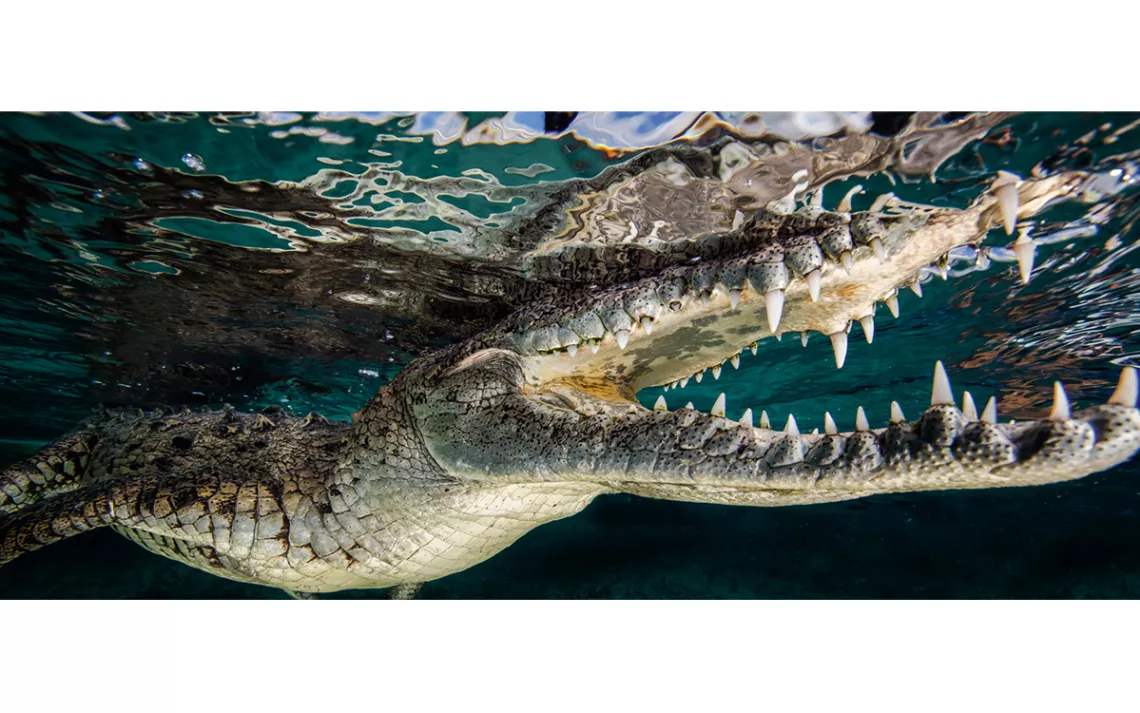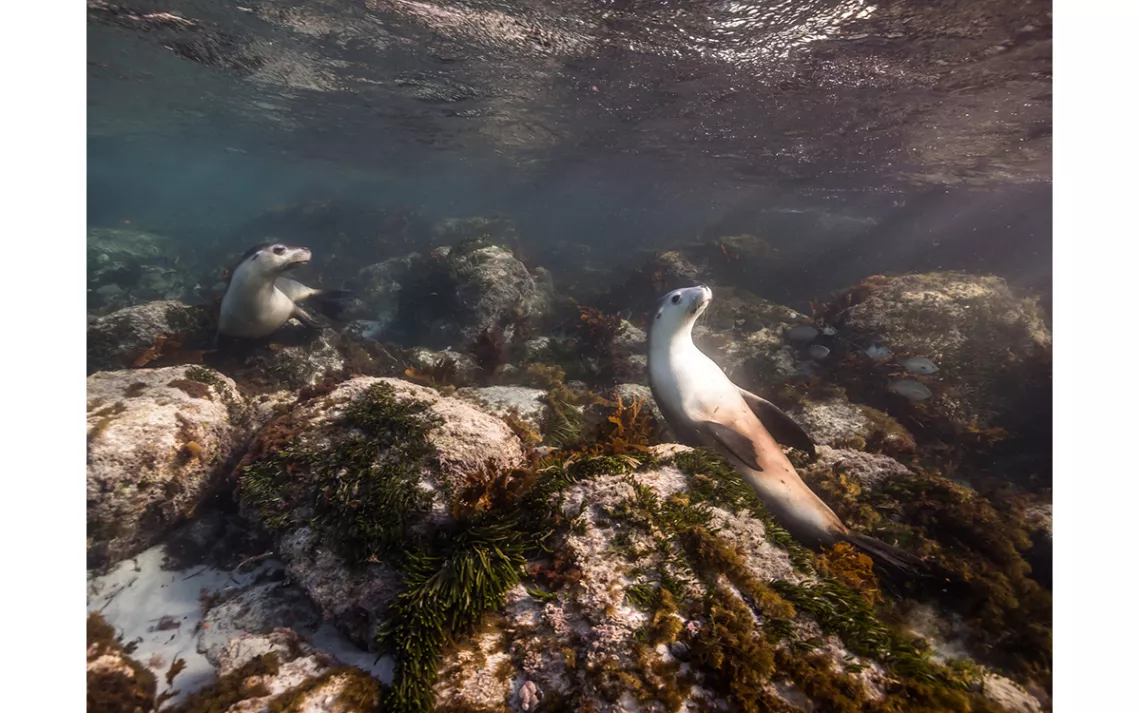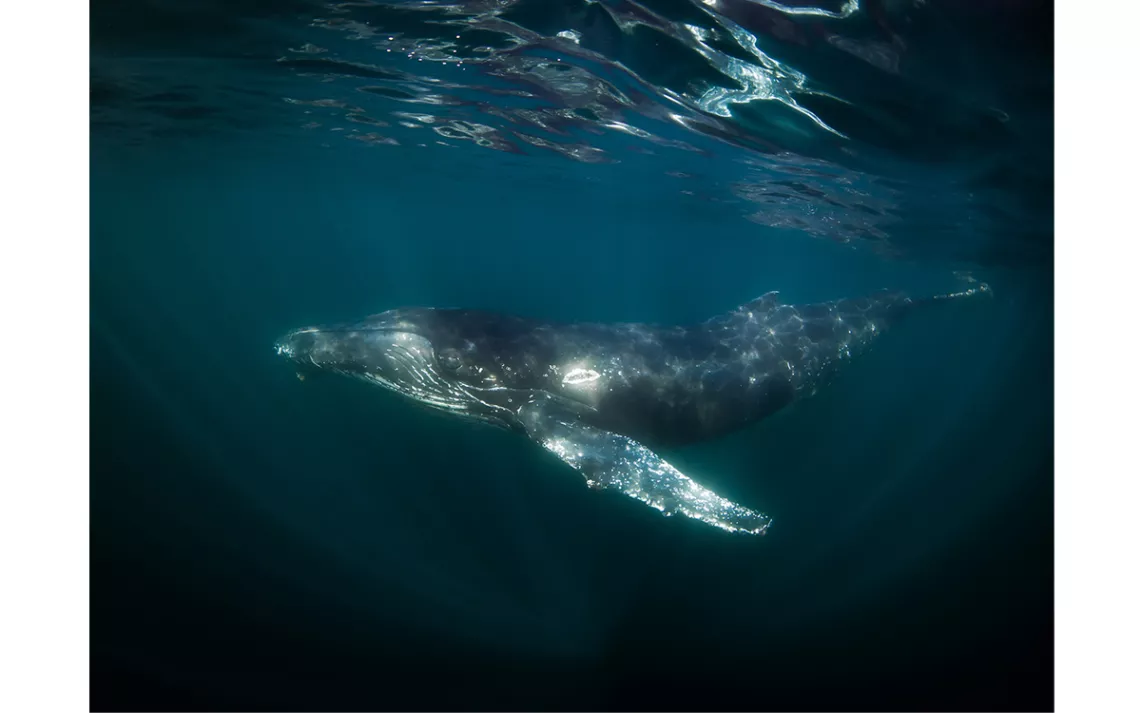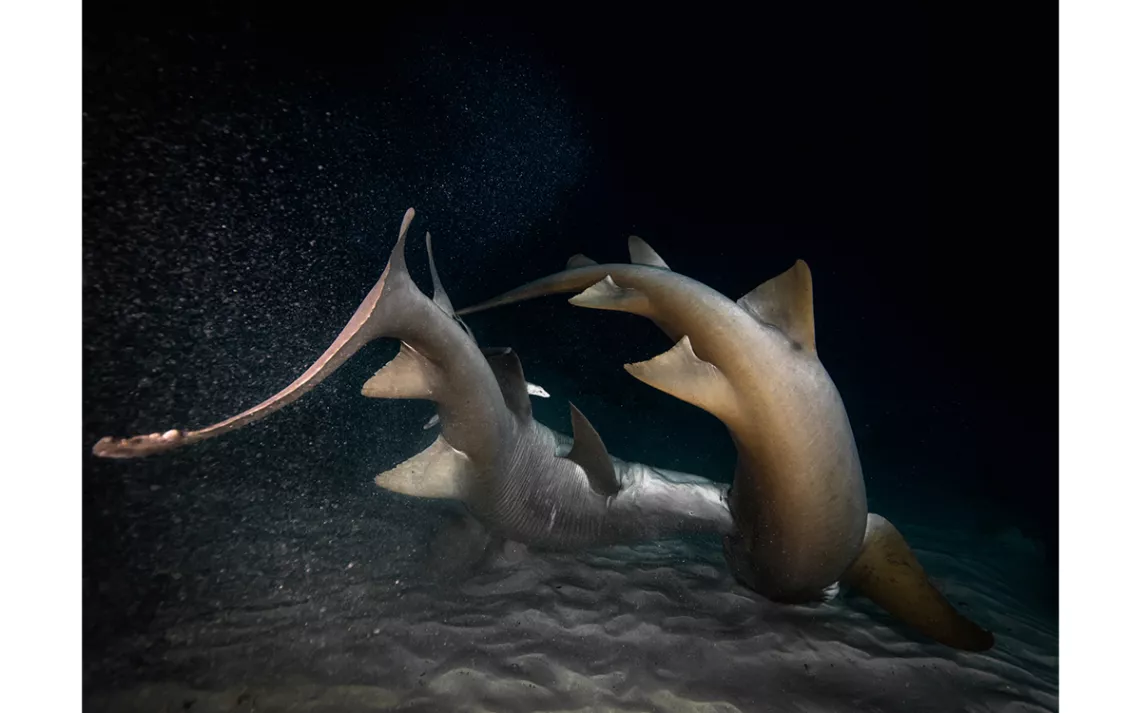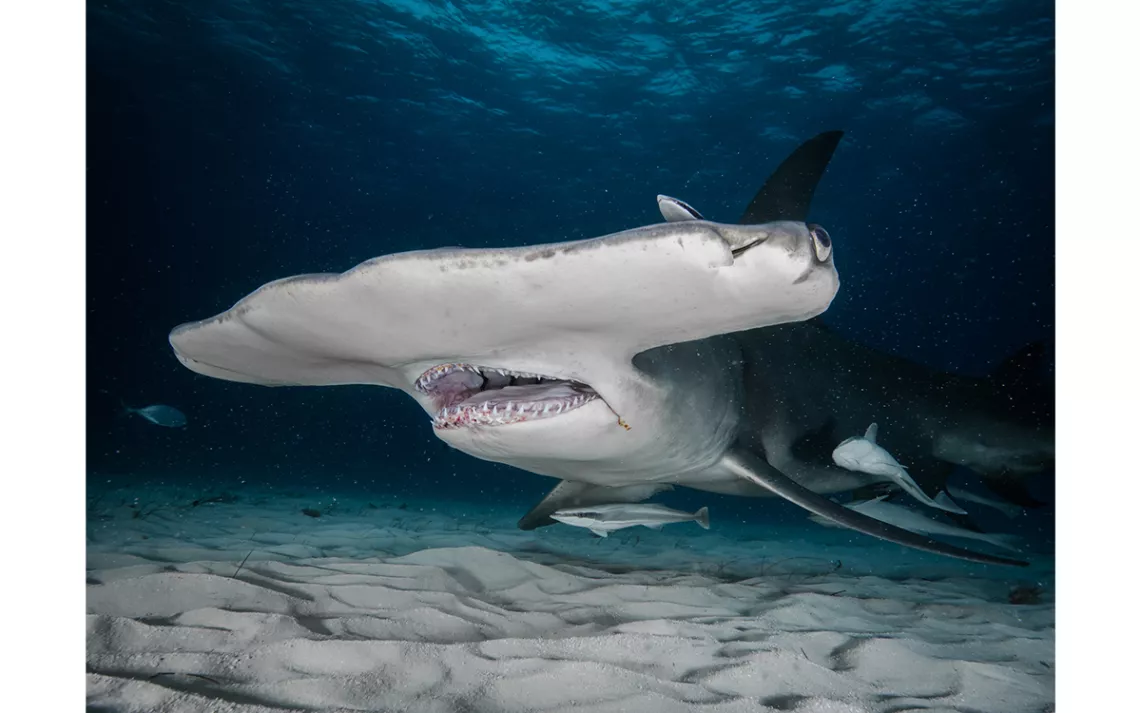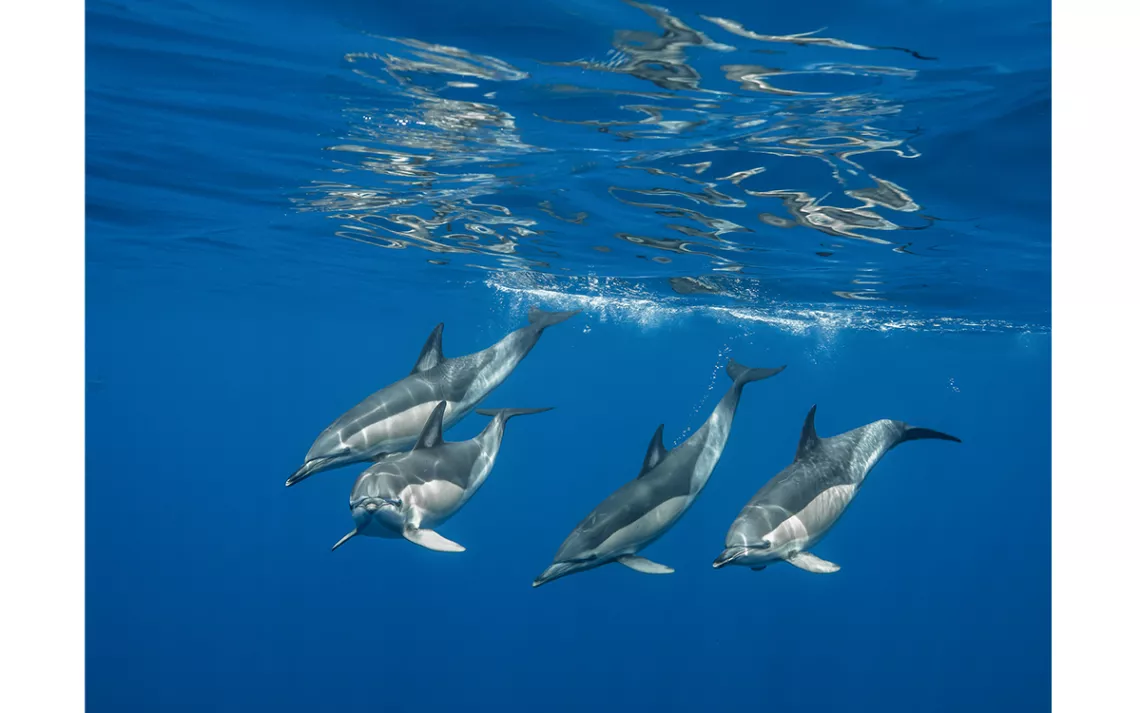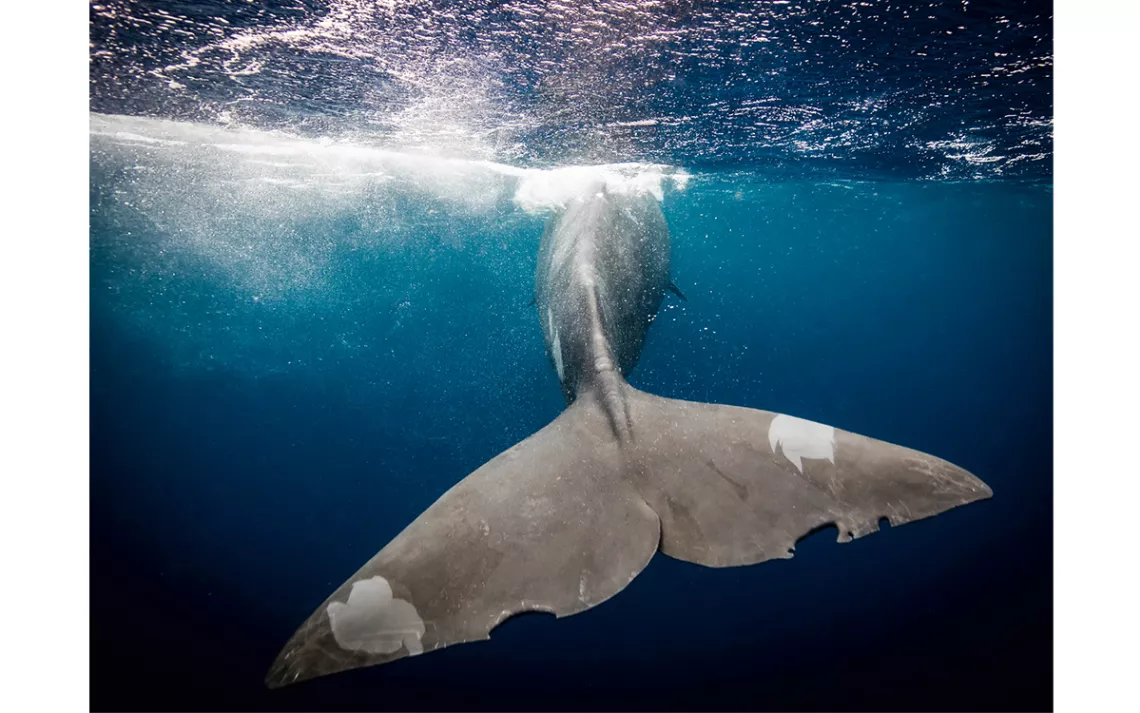This World Oceans Day, Answer the “Call of the Blue”
Philip Hamilton’s camera captures underwater splendors
Photos by Philip Hamilton
One of Philip Hamilton’s biggest laments is that we know more about the moon than the oceans. Oceans occupy 70 percent of the world’s surface, but scientists estimate that 95 percent of it remains unexplored and that 91 percent of ocean species are yet to be classified.
“It’s scary, isn’t it?” Hamilton asks. “If we don't really know much about it, we cannot possibly protect and defend it.” Call of the Blue, a collection of underwater photographs from dives spanning the globe, is Hamilton’s answer.
Growing up by the sea in Chile, Hamilton used to spend entire summers by the water, swimming and fishing. “Certain people need mountains, others need snow, but for me it has always been water. So it felt natural to go deeper and deeper,” Hamilton says
At 23, as soon as he was finished with university, Hamilton started diving. It was the beginning of a lifelong obsession, and three decades later, it became a full-time calling. For five years now, after quitting his job in finance, Hamilton has been underwater at a different location every few weeks, collecting the images that became Call of the Blue.
Ranging from the infinitesimal to the colossal, Call of the Blue takes the viewer on a journey through ocean ecosystems we rarely observe. Creatures like anemone shrimp and pygmy seahorses no bigger than a thumbnail inhabit the pages with blue whales and great white sharks. Bright reefs contrast sharply with the indigo-gray depths of approaching ocean floor. Marine iguanas swim upward to shore after feeding; green turtles dive down to shallow seagrass. “If you miss the tiny parts, you might be ruining the future of the largest animals of all,” Hamilton says. “When you do photography for conservation, you have to cover how it is all interconnected.”
In the 1960s, David Brower produced several “Exhibit Format” coffee-table books for the Sierra Club. Photographs by legends including Ansel Adams and Eliot Porter were paired with the words of writers like Thoreau and Stegner.
These books, the story goes, were instrumental in getting the US government to pass the Wilderness Act, which guaranteed the protection of the country’s wild places. Hamilton’s stunning compendium is a nod to that legacy, with the power to influence readers and policy-makers alike and conveying the importance of preserving our oceans.
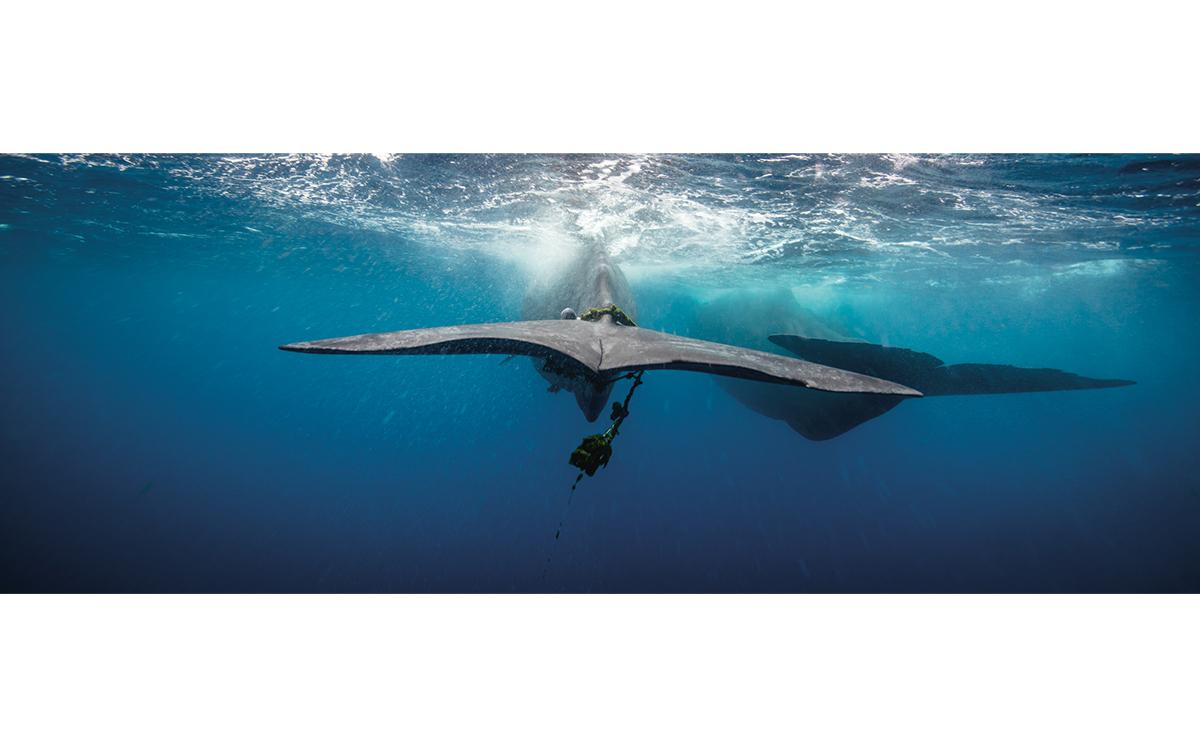
Through his journeys, Hamilton realized that a lot of people across the world were investing money, time, and energy to protect the oceans—people he came to call guardians. Interspersed through the photographs are 21 of their stories and how they came to answer the call of the blue.
Their heartfelt callings are as poetic and varied as the images of the underwater creatures that accompany them. Among them is the original Flipper dolphin trainer who has spent the past 50 years campaigning against dolphin captivity, a shark attack survivor who lost a leg but gained a voice for shark conservation and who continues to dive, and the first woman to row across the Atlantic, Pacific, and Indian Oceans.
It also includes stories from 50 of the world’s foremost scientists working on oceans, reefs, coasts, sharks, turtles, and cetaceans, woven together by UK marine biologist Tom Hooper.
“The idea behind this book wasn't only about bringing people beauty,” Hamilton says, “but about bringing the science to support this beauty and bearing witness to everything people are doing to protect it. It all needed to be together.”
Of the almost 100,000 photographs Hamilton took over half a decade, only 300 made it into the final book. It was a difficult process—like picking one out of many children—and the ones that remain do so because they show us “something essential of what it is to be underwater.”
For Hamilton, the most essential thing about being underwater is being grateful, and patient. It is as much about knowing what your equipment and body can do in the currents as it is about knowing what the seahorses and turtles or sharks and whales will do. “If you don't know the behaviors and patterns of the animals, it is very unlikely that you will be any good at photographing them,” he warns. To be able to approach wildlife unnoticed, he learned to freedive. To learn to be steady, he dove again and again and again. He has waited a year or more to get the right conditions for a shot.
Hamilton is never after the “perfect shot,” though, which is perhaps why he has so many. Sometimes everything aligns perfectly—light, camera, depth, tides, and the animal, of course—and the shutter clicks. “When you get the chance to be with these animals—so smart, agile, and versatile—if you get to photograph them, it is because the animal has allowed you to do so. It is a gift from nature, and I accept it with grace.”
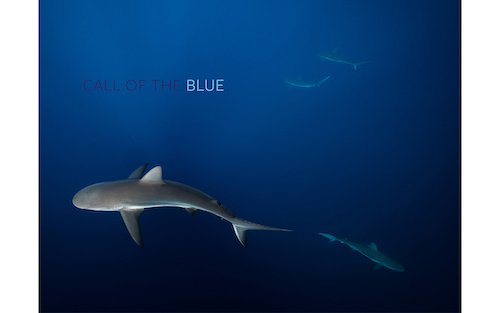
 The Magazine of The Sierra Club
The Magazine of The Sierra Club
